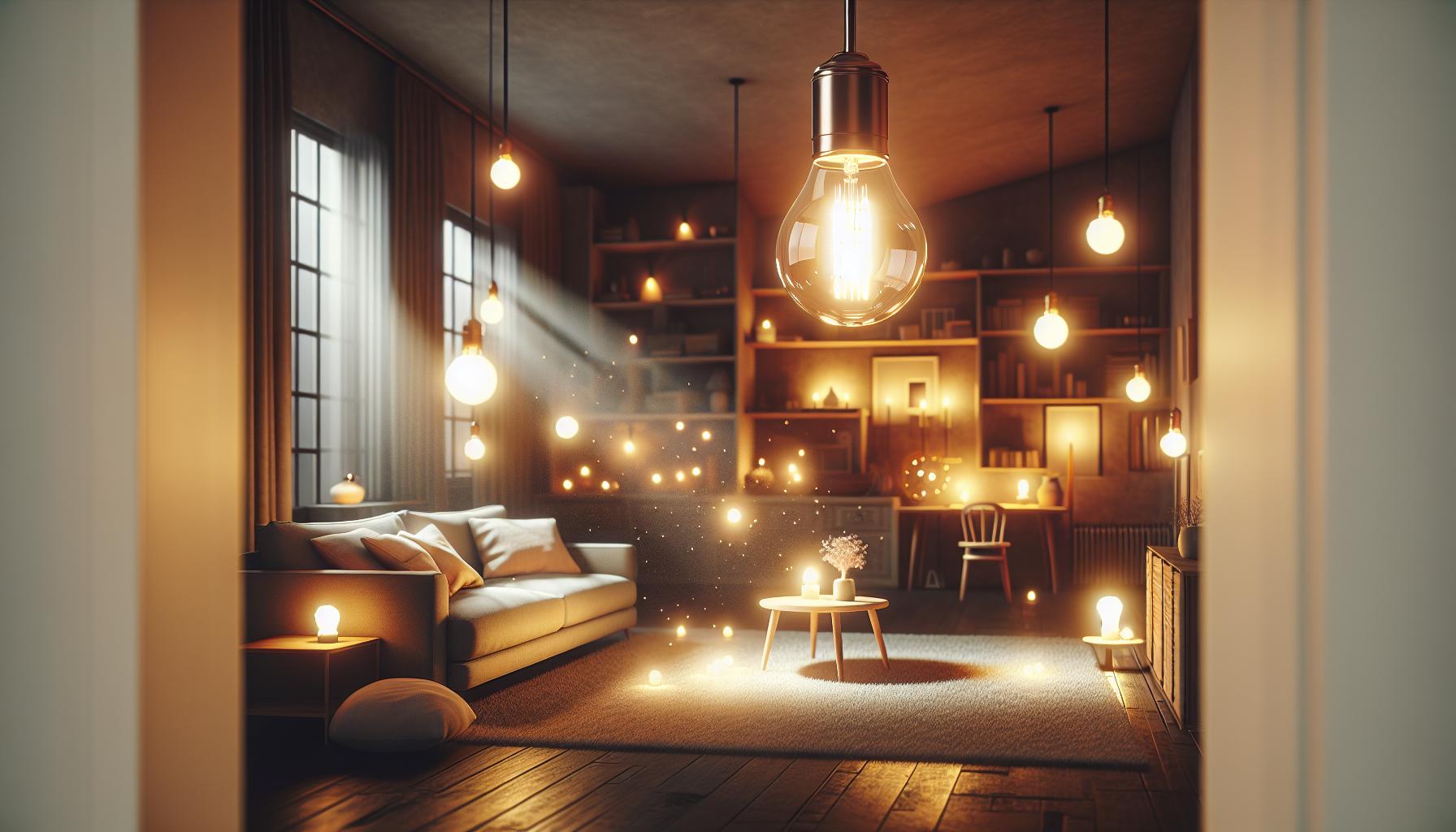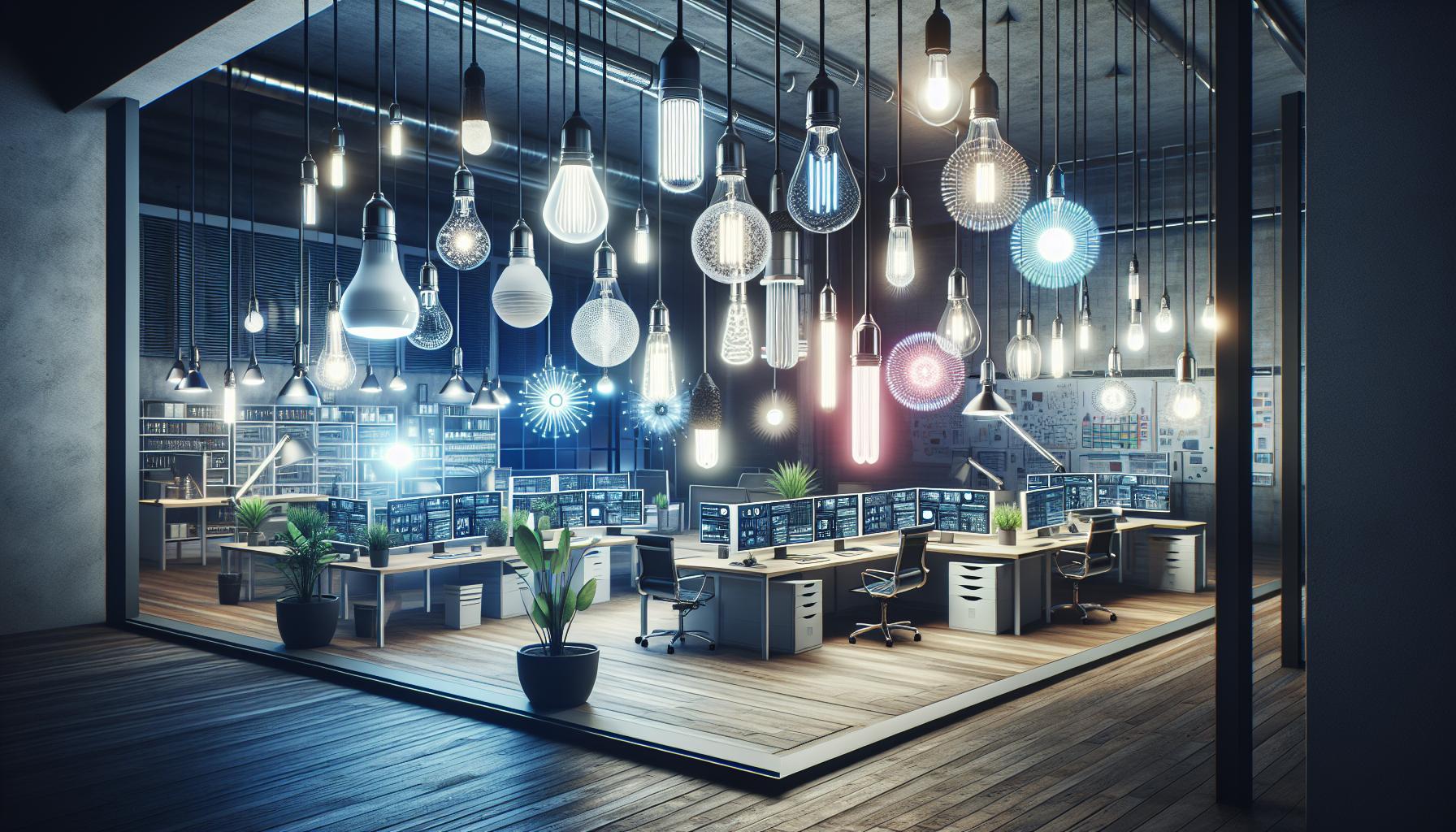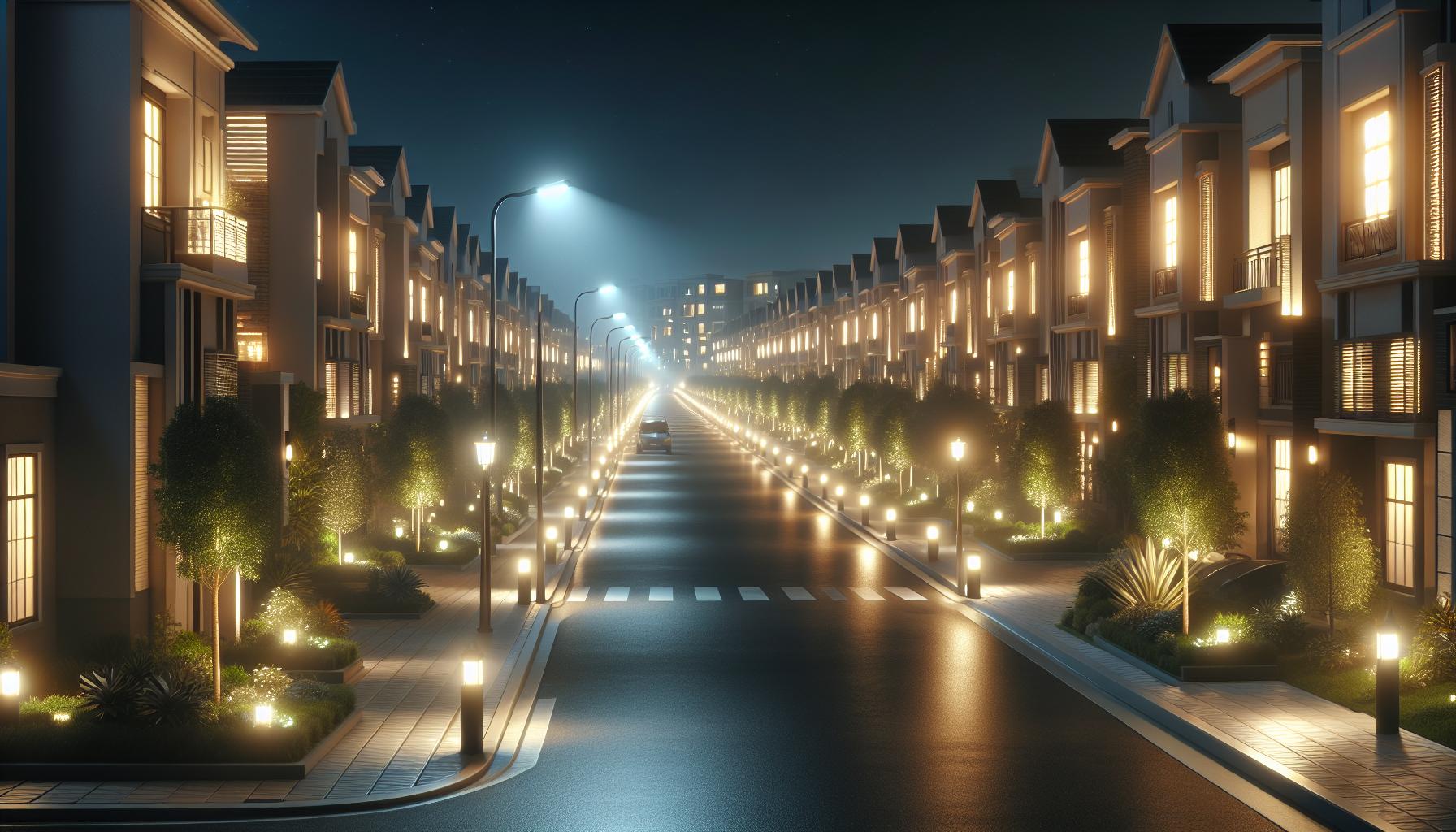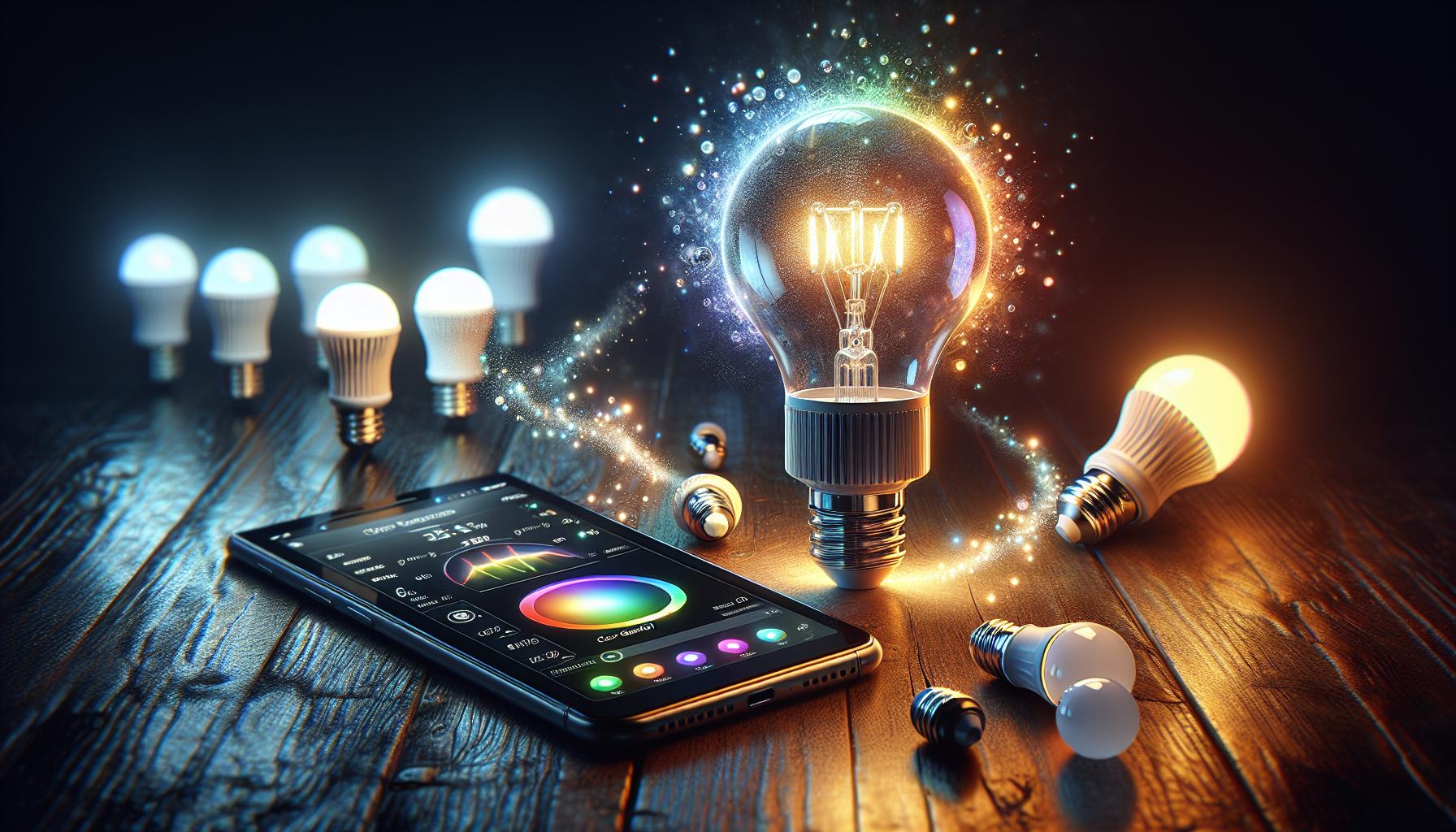You’ve flipped a switch countless times without a second thought, but have you ever paused to consider what a marvel light bulbs truly are? These everyday wonders do more than just banish darkness from your rooms.
From creating a cozy ambiance to keeping streets safe at night, light bulbs are the unsung heroes of your daily life. They’re not just about illumination; they’re about innovation, comfort, and even security.
Imagine your world without them – pretty dim, right? Let’s shed some light on the incredible uses of light bulbs that brighten up your world in ways you might not even realize.
Lighting Up Spaces
Stepping into the core of what makes a light bulb so indispensable, you’ll find their ability to transform any area. Light bulbs don’t just fill a room with light; they create possibilities. Imagine redesigning your old attic or finally kickstarting that home office project you’ve been dreaming about. With the right light bulb, dark corners blossom into functional spaces.
The Heart of Home Projects
- DIY enthusiasts know too well that the perfect lighting can uplift a room’s aesthetics.
- Light bulbs come in a variety of lumens and color temperatures, giving you freedom over how you light up your craft corner or reading nook.
- LEDs offer you energy efficiency, halogens give that instant brightness, while soft warm incandescent bulbs coat your room in a comforting glow.
You’ve likely heard about smart bulbs, your modern DIY best friend. These techie gems allow for customized color schemes and automation, perfect for setting the mood as you plow through your latest venture. Ambient lighting isn’t just about vision; it’s about experience.
Safety and Visibility
Think about those late-night kitchen trips or the careful steps you take down the basement stairs. Beyond decoration and utility, light bulbs are key to preventing accidents and ensuring your path is always clear. Brightness isn’t just for show; it’s a foundational element of home safety. Strategically placed lights can deter potential risks, both inside and out, making them silent guardians of your domestic haven.
In your outdoor spaces, the right lighting setup is crucial for those barbeque evenings or nighttime gatherings. From patio string lights to garden spotlights, a well-lit exterior not just lifts the ambiance but also increases your home’s security.
The Impact on Mood and Productivity
Working from home, you’ve probably noticed how different lighting can plummet or soar your productivity levels. A study conducted by the American Society of Interior Design found that 68% of employees complain about the lighting situation in their offices. Translate that to your home, and you recognize how pivotal the right bulb can be. A bright, clear light can reduce eye strain, prevent headaches, and maintain your focus.
Natural light has its place, but when it wanes, your trusty bulb picks up the slack. They’re not just fixtures; they are the silent enablers of your everyday triumphs.
Creating Ambiance
When you enter a room, it’s not just the furniture or the decor that catches your eye. The ambiance, that intangible feeling you get is often dictated by the lighting. Light bulbs are the unsung heroes in setting the perfect mood, whether you’re hosting a dinner party or simply curling up with a good book.
The Power of Dimmable Lights
Imagine this: you’ve spent the day sweating over a sumptuous feast and your guests are due any minute. Dimmable lights come to the rescue, casting a warm glow that invites relaxation and conversation. Dimming your lights can instantly transform a space from a vibrant work area to an intimate nook. It’s not just practical; it’s like having a mood dial at your fingertips.
Color Temperature Matters
Selecting the right color temperature is key in creating ambiance. You’ve probably heard of “warm” and “cool” lighting, but did you know that these terms refer to the Kelvin scale? Warm light, typically below 3000K, gives off a cozy, inviting feel, often used in living rooms and bedrooms. Cool light, above 4000K, simulates daylight and is ideal for focusing on tasks or highlighting art.
| Color Temperature | Description | Common Use |
|---|---|---|
| Below 3000K | Warm, Cozy | Living Rooms, Bedrooms |
| Above 4000K | Cool, Alert | Offices, Kitchens |
Layered Lighting for Depth
To truly craft ambiance, you need to layer your lighting. Combining different light sources at various heights and intensities can add depth and character to a room. Here’s a basic layering strategy to enhance ambiance:
- Ambient Lighting: This is your general, overall light. Soft and uniform, it sets the base level of brightness in a room.
- Accent Lighting: These are your drama creators. Use spotlights, strip lights, or even table lamps to highlight artwork or architectural features.
- Task Lighting: Whether it’s a reading lamp or under-cabinet lighting in the kitchen, task lighting is focused and brighter, aiding in specific activities.
Improving Productivity
« What Are the Best Light Bulbs to Use? Illuminate Your Space Efficiently
Are Oven Light Bulbs Universal? Decoding the Compatibility Mystery »
When you’re setting up your workspace, lighting might not be the first thing you think about. However, it plays a pivotal role in how efficiently you work. Under poor lighting conditions, you’re more prone to experience eye strain, headaches, and fatigue. A well-lit workspace, on the other hand, can lead to better focus and longer, more productive work periods.
As a lighting aficionado who loves to tinker with home DIY projects, you’ll understand the satisfaction that comes from creating the perfect workspace. You might start with task lighting, which involves directing light to specific areas where you perform your tasks. This could be in the form of a desk lamp, under cabinet lighting, or overhead pendants. Task lighting is meant to reduce glare and shadows, making it easier for you to read, write, and work on your computer.
Here’s a quick look at a few different types of light bulbs and their impact on productivity levels:
| Type of Bulb | Benefits for Productivity |
|---|---|
| LED | Energy-efficient and long-lasting, providing a consistent light output that’s easy on the eyes. |
| CFL | Releases a high-quality light and less heat, making the workspace more comfortable. |
| Halogen | Offers bright, white light ideal for task-intensive work. |
It’s also essential to consider the color temperature of your light sources. Cooler light, which mimics daylight, is often recommended for workspaces as it can help maintain alertness and keep your circadian rhythm in check. Lights with a color temperature between 4000K and 6500K are usually best for these applications.
Finally, don’t forget about the benefits of natural light. Whenever possible, arrange your workspace to take advantage of windows and skylights. Natural light doesn’t just aid in productivity; it also improves your mood and well-being. So if you’ve got a window nearby, make sure your desk is positioned to get that much-needed sunshine.
Through thoughtful lighting design, you can effectively transform any space into a productivity powerhouse. With the right bulbs in place, your workspace will not only look great but also encourage a more attentive and dynamic working environment.
Promoting Safety and Security
When you’re thinking about light bulb applications, safety and security should be top of mind. Properly illuminated spaces are deterrents for crime. Thieves and vandals typically shy away from well-lit areas since they’re more likely to be observed and caught. It’s your first line of defense against unwelcome visitors.
Streetlights and exterior floodlights play a pivotal role in community safety. These lighting giants ensure roads and sidewalks are visible at night, reducing the chances of accidents and helping pedestrians to feel secure. Installing motion-sensor lights around your property not only helps you navigate safely in the dark but also startles and wards off potential intruders.
In your own home, light bulbs serve as silent guardians. Think about those nights you come home late—having a porch light on not only helps you find your way but also tells you that all is well. Inside, strategically placed lights can prevent trips and falls. A well-lit staircase, for instance, is less likely to be the site of an accident compared to one shrouded in darkness.
But let’s talk about those times when natural disasters strike or power outages occur. This is where emergency lighting comes into play. Equipped with backup power sources like batteries, these light bulbs ensure you’re never left in the dark during emergencies, thus maintaining safety.
As a DIY enthusiast, you can appreciate the importance of good lighting in a workshop or garage. It’s not just about visibility; it’s about safety too. Adequately lighting your work area prevents mishaps and allows you to handle tools and machinery securely. With advancements in lighting technologies, you have many options that are both safe and energy-efficient, which also means cost savings for you down the line.
Remember, lighting isn’t just about being able to see—it’s about being seen and staying safe. Whether it’s through the use of timers, sensors, or simply choosing the right kind of bulbs, you can drastically enhance safety and security around your living and work spaces.
Innovations in Light Bulb Technology
In the ever-evolving world of technology, light bulbs are not just an ordinary household item but a canvas for innovation. Your love for home DIY projects shines a light on the importance of staying updated with the latest advancements in light bulb technology.
Smart bulbs have become a game-changer in the lighting industry. You can control these high-tech bulbs directly from your smartphone or smart home system. They offer features like:
- Adjustable color temperature
- Scheduling
- Remote access
- Integration with home automation systems
Imagine setting the mood for your next DIY project with just a tap on your phone.
The advent of Li-Fi technology is another breakthrough. While still in the experimental phase, Li-Fi could transmit data through light waves, potentially revolutionizing internet connectivity. This could mean your workspace not only has fantastic lighting but also serves as a hub for high-speed internet.
Let’s talk numbers. Here are some of the impressive stats regarding energy-efficient LED bulbs compared to traditional incandescent bulbs:
| LED Bulbs | Incandescent Bulbs |
|---|---|
| Lifespan up to 25,000 hours | Lifespan around 1,000 hours |
| Use 75% less energy | Use more energy |
| Emit little heat | Emit 90% of their energy as heat |
Moreover, human-centric lighting, which adjusts to your circadian rhythm, is on the upswing. This innovation doesn’t just illuminate; it seeks to improve your overall well-being. It adjusts the light’s intensity and color based on the time of day, syncing with your natural body clock to enhance focus during the day and help you unwind at night.
As a DIY enthusiast, you’ll also appreciate the proliferation of high CRI LED bulbs. With a Color Rendering Index close to 100, these bulbs ensure colors look authentic and vibrant—ideal for detailed paintwork or selecting the perfect shade of curtains.
Light bulbs are no longer just about lighting a room; they’re about enhancing your life. With each stride in technology, your workspace, home, and projects get brighter and smarter. Keep your eyes peeled for these innovations, as they might just spark your next big DIY lighting project.
Conclusion
So there you have it—light bulbs aren’t just for illuminating your late-night reads. They’re pivotal in crafting an environment that fosters productivity and safety. Whether you’re opting for LEDs to save on energy bills or integrating smart bulbs for that high-tech edge, remember that the right lighting can transform your space. Embrace the glow of innovation and let your light bulbs work wonders for your daily life. Keep an eye on those color temperatures and don’t forget the impact of natural light on your well-being. Here’s to bright ideas and even brighter spaces!
Frequently Asked Questions
What impact do light bulbs have on productivity?
Light bulbs play a crucial role in productivity by providing well-lit workspaces that enhance focus and enable longer work periods.
Which type of light bulb is most energy-efficient?
LED bulbs are the most energy-efficient and have the added benefit of being long-lasting.
Are there any light bulbs that are particularly good for task-intensive work?
Halogen bulbs are ideal for task-intensive work due to their bright, white light.
What is the recommended color temperature for a workspace?
Cooler light is generally recommended for workspaces to promote concentration and alertness.
How does natural light affect productivity?
Natural light has been shown to improve productivity and well-being, offering benefits both physically and mentally.
Why is lighting important for safety and security?
Good lighting deters crime, ensures visibility on roads and sidewalks, and provides necessary emergency lighting during power outages.
Can modern light bulbs be integrated into smart home systems?
Yes, smart bulbs can be controlled from smartphones or smart home systems, offering convenience and advanced features.
What is Li-Fi technology, and how does it relate to light bulbs?
Li-Fi technology uses light waves to transmit data, which could turn light bulbs into internet access points in the future.
What is human-centric lighting, and why is it significant?
Human-centric lighting adjusts to an individual’s circadian rhythm, potentially improving sleep quality and overall well-being.
What is CRI, and why is it beneficial for DIY enthusiasts?
CRI stands for Color Rendering Index, and high CRI LED bulbs help DIY enthusiasts by providing light that shows colors more accurately.





